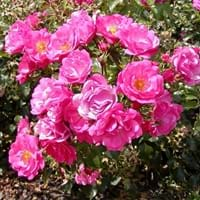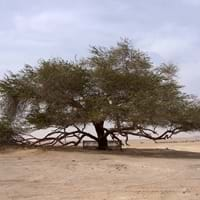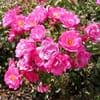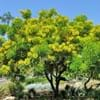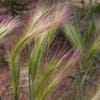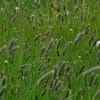Life Span
Perennial
Perennial
Type
Flowering Plants, Houseplant, Shrub
Tree
Origin
Asia, Europe, North America
Southwestern United States
Types
Hulthemia, Banksianae, Pimpinellifoliae
Prosopis chilensis, Prosopis juliflora
Number of Varieties
Not Available
Habitat
gardens
Desert, Dry areas
USDA Hardiness Zone
3-10
6-9
AHS Heat Zone
Not Available
12-1
Sunset Zone
Not Available
Not Available
Habit
Upright/Erect
Arching/Fountain-shaped
Flower Color
Hot Pink, Light Pink, Orange, Red, White, Yellow
Yellow
Flower Color Modifier
Not Available
Bicolor
Fruit Color
Not Available
Tan
Leaf Color in Spring
Dark Green
Blue Green
Leaf Color in Summer
Dark Green
Blue Green
Leaf Color in Fall
Dark Green
Blue Green
Leaf Color in Winter
Dark Green
Not Available
Leaf Shape
Pinnate
Compound
Plant Season
Late Summer, Mid Summer, Summer
Spring
Sunlight
Full Sun, Partial Sun
Full Sun
Type of Soil
Clay, Loam, Sandy
Clay, Loam, Sand
The pH of Soil
Neutral, Slightly Acidic, Slightly Alkaline
Acidic, Neutral, Alkaline
Soil Drainage
Well drained
Well drained
Bloom Time
Late Summer, Mid Summer, Summer
Spring
Tolerances
Wet Site
Drought, Salt
Where to Plant?
Ground, Pot
Ground
How to Plant?
Seedlings, Stem Planting
Grafting, Seedlings
Plant Maintenance
Medium
Medium
Watering Requirements
Requires a lot of watering, Requires regular watering
Keep ground moist
In Summer
Lots of watering
Ample Water
In Spring
Moderate
Moderate
In Winter
Average Water
Ample Water
Soil pH
Neutral, Slightly Acidic, Slightly Alkaline
Acidic, Neutral, Alkaline
Soil Type
Clay, Loam, Sand
Clay, Loam, Sand
Soil Drainage Capacity
Well drained
Well drained
Sun Exposure
Full Sun, Partial Sun
Full Sun
Pruning
cut main flower spike, Prune in spring, Remove dead leaves, Remove deadheads
Prune in early spring, Remove all watersprouts, Remove dead leaves
Fertilizers
5-10-10 fertilizer
Use nitrogen rich soil
Pests and Diseases
Aphids, Black Spot, Japanese Beetles, Powdery mildew, Spider mites
Armored scales, Candidula scale, Flatheaded borers, Mealybugs, Mesquite girdler, Mesquite scale, Oldman longhorn, Roundheaded borers, Stem gall rust
Plant Tolerance
Wet Site
Drought, Salt
Flower Petal Number
Double
Not Available
Fragrant Bark/Stem
No
Yes
Foliage Texture
Not Available
Fine
Foliage Sheen
Matte
Matte
Allergy
Asthma, contact allergic dermatitis, Rhinoconjunctivitis
Asthma, Rhinitis
Aesthetic Uses
Borders, Bouquets, Showy Purposes
Not Used For Aesthetic Purpose
Beauty Benefits
good for lips, Improve skin tone, Moisturizing, Speed hair growth
Improve hair condition
Environmental Uses
Air purification
Air purification
Medicinal Uses
anti-inflammatory, Antiseptic, Asthma, Dehydration, Dermatitis, Eczema, Eye Problems, Fatigue, Gallbladder Diseases, Liver problems, Sore throat, Stomach aliments, Swelling, Ulcers, Urinary tract problems
Conjuctivitis, Emetic, Eye Problems, Headache, Laxative, Pain in gums, Stomach aliments, Sunburn
Part of Plant Used
Flowers
Inner Bark, Leaves, Sap
Other Uses
Can be made into a herbal tea, Cosmetics, Culinary use, Edible syrup, Making Sweet Scented Oil, Oil is used for aromatherapy, Used as essential oil, Used as Ornamental plant, Used for fragrance, Used for its medicinal properties
Used as a dye, Used As Food, Used for its medicinal properties, Wood is used for making furniture
Used As Indoor Plant
Yes
No
Used As Outdoor Plant
Yes
Yes
Garden Design
Bedding Plant, Mixed Border
Shade Trees, Street Trees
Botanical Name
Rosa rubiginosa
PROSOPIS glandulosa
Common Name
Rose
Mesquite
In Hindi
गुलाब
उत्तर पश्चिमी अमरीका का एक फलीदार पेड
In French
Se leva
Mesquite
In Greek
Τριαντάφυλλο
Είδος μιμόζας
In Portuguese
Rosa
Mesquite
Phylum
Magnoliophyta
Magnoliophyta
Class
Magnoliopsida
Magnoliopsida
Clade
Angiosperms, Eudicots, Rosids
Angiosperms, Eudicots, Rosids
Tribe
Not Available
Not Available
Subfamily
Rosoideae
Not Available
Number of Species
Not Available
Importance of Rose and Mesquite Tree
Want to have the most appropriate plant for your garden? You might want to know the importance of Rose and Mesquite Tree. Basically, these two plants vary in many aspects. Compare Rose and Mesquite Tree as they differ in many characteristics such as their life, care, benefits, facts, etc. Every gardener must at least have the slightest clue about the plants he wants to plant in his garden. Compare their benefits, which differ in many ways like facts and uses. The medicinal use of Rose is anti-inflammatory, Antiseptic, Asthma, Dehydration, Dermatitis, Eczema, Eye Problems, Fatigue, Gallbladder Diseases, Liver problems, Sore throat, Stomach aliments, Swelling, Ulcers and Urinary tract problems whereas of Mesquite Tree is Conjuctivitis, Emetic, Eye Problems, Headache, Laxative, Pain in gums, Stomach aliments and Sunburn. Rose has beauty benefits as follows: good for lips, Improve skin tone, Moisturizing and Speed hair growth while Mesquite Tree has beauty benefits as follows: good for lips, Improve skin tone, Moisturizing and Speed hair growth.
Compare Facts of Rose vs Mesquite Tree
How to choose the best garden plant for your garden depending upon its facts? Here garden plant comparison will help you to solve this query. Compare the facts of Rose vs Mesquite Tree and know which one to choose. As garden plants have benefits and other uses, allergy is also a major drawback of plants for some people. Allergic reactions of Rose are Asthma, contact allergic dermatitis and Rhinoconjunctivitis whereas of Mesquite Tree have Asthma and Rhinitis respectively. Having a fruit bearing plant in your garden can be a plus point of your garden. Rose has no showy fruits and Mesquite Tree has showy fruits. Also Rose is flowering and Mesquite Tree is not flowering . You can compare Rose and Mesquite Tree facts and facts of other plants too.
